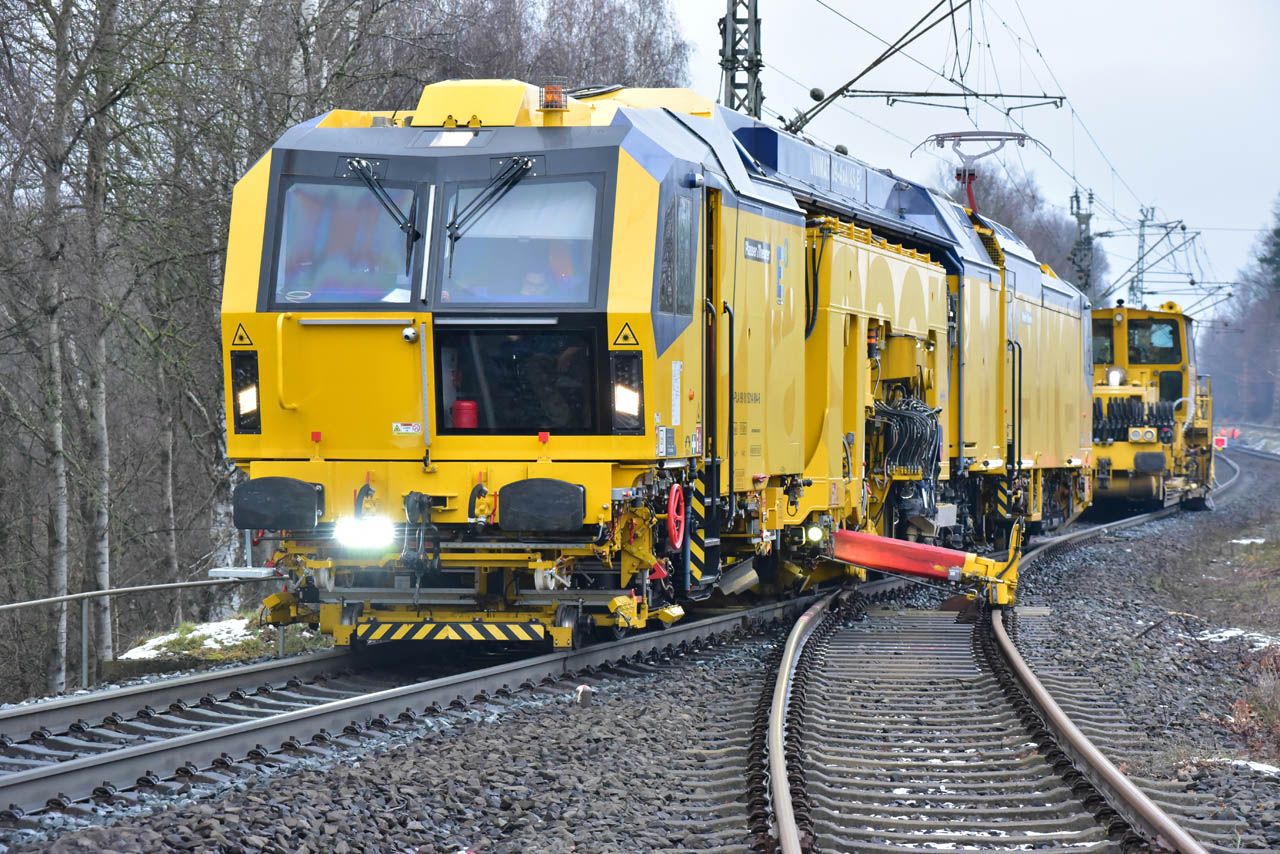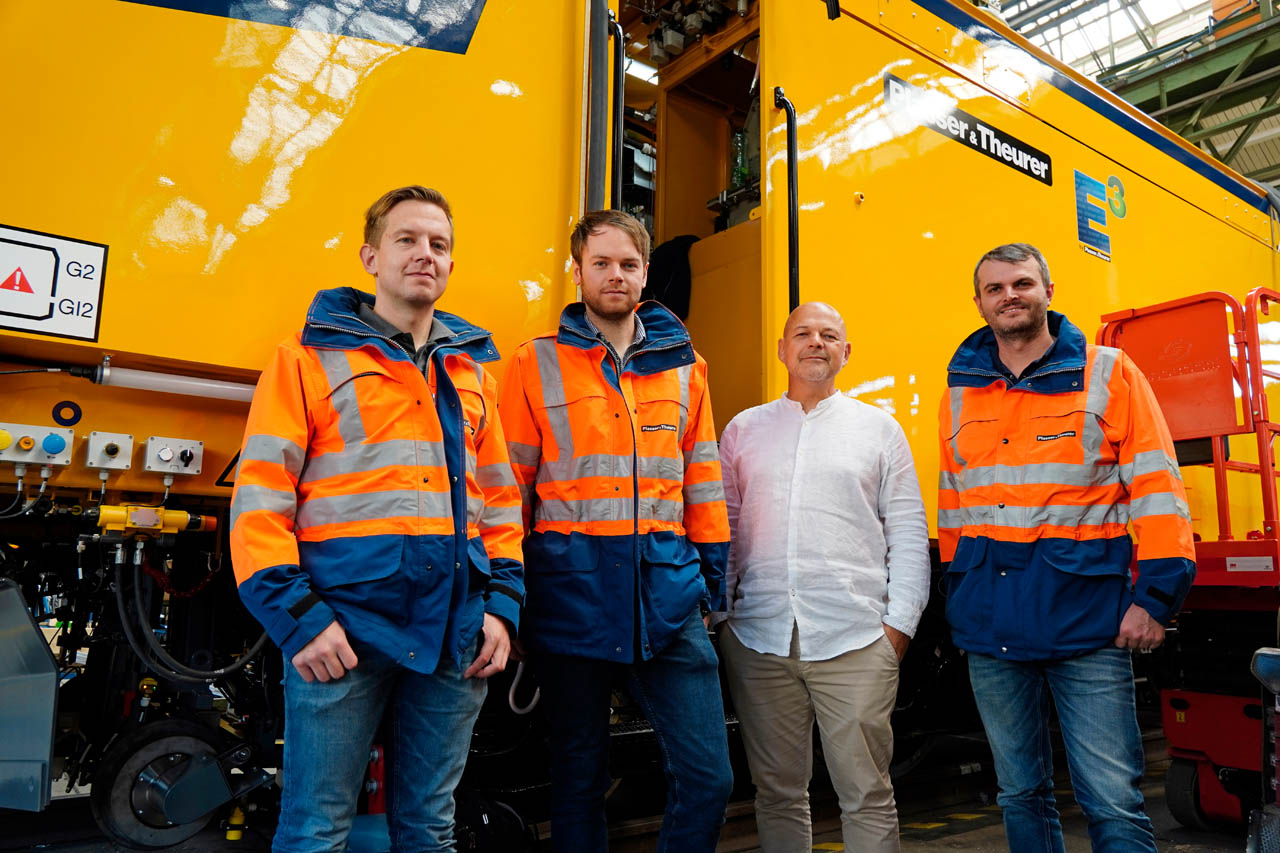The internal combustion engine features prominently in the history of Plasser & Theurer. Nearly 17,000 machines have been equipped with this drive technology since the company was founded. And for good reason: the internal combustion engine is reliable and has characteristics that meet track maintenance requirements. Drive concepts that have been tried, tested, and perfected over decades represent load profiles in an optimal way, and it is relatively easy to guarantee fuel availability, even in areas with weak infrastructure.
Nevertheless, in 2015 the company opened a new chapter in the use of drive technology in track maintenance: they became the first manufacturer of track maintenance machines to put machines with hybrid drive technology on track. The machines in question, the 09-4X E³ Dynamic Tamping Express for track tamping and the BDS 2000 E³ ballast management system, are high-capacity machines equipped with both an internal combustion engine and an electric motor. It was possible for the first time to travel and work using both the conventional method of diesel as well as power from the overhead line.
“The main driver back then was not an insatiable demand for alternative drive concepts. Rather, our assessment was that many markets were going to develop in that direction in the long term, with the environment becoming an increasingly important factor,” says Johannes Max-Theurer about the background of the first E³ machines.
Since then, 13 machines from various product lines have been conceptualised and engineered with a hybrid or fully electric drive. The learning curve was particularly steep with the first few projects.
“We’re a company that has built thousands of machines with internal combustion engines over decades. We’re well versed in this technology and familiar with every aspect. Adapting the drive to a hybrid or fully electric concept isn’t a minor detail. It is a challenge to design our machine concept so it meets varying national standards for overhead line voltages or electromagnetic compatibility (EMC) regulations. We were already able to meet many of these challenges. However, new challenges arise with every new infrastructure and every new machine concept,” says Stefan Krenn, Head of Electrical Engineering Development at Plasser & Theurer.
Rails to the rescue
Since 2015, an important realisation was that scalability varies greatly between internal combustion and electric concepts. While it is relatively uncomplicated, for example, to also use 120 kW drive units with classic machines, the scaling steps for fully electric design kits are significantly larger at 600 kW or 1000 kW. It is technically challenging to scale down in smaller steps. That must be taken into account when conceptualising machines.
In addition to technological aspects that are solved step by step, alternative drives are also a source of organisational challenges for Plasser & Theurer. New skills are needed for the increasing number of E³ projects: this applies to many divisions besides Engineering Solutions, Production, or Homologation and Safety. Several employees are attending additional training courses to ensure they are best prepared to meet these requirements.
The new drive concepts bring about fundamental changes, and it is not only Plasser & Theurer as a manufacturer that is affected. For customers, the new machines have an impact that goes beyond their carbon footprint. These new machines have direct operative advantages in terms of servicing and operation. Plasser & Theurer’s modular design concept showcases its strengths to the fullest extent when analysing life cycle costs and comparing them with those of conventional machines. Longer servicing intervals that are easier to plan can reduce maintenance costs and compensate for higher initial costs in the life cycle.
“For me, there is no alternative to developing alternative drive concepts. The railway system has already provided answers to many of today’s major problems: secondary lines are being electrified, green electricity is used more frequently on electrified lines, and more countries are focusing intensely on making track construction and maintenance sustainable. In this sense, we are here to help as a strong partner, providing technologies that have been proven for decades in combination with innovative drives,” says Johannes Max-Theurer.
Maintenance of high-performance turnouts with hybrid drive
With the new UNIMAT 09-8×4/4S BR Dynamic E³, Plasser & Theurer is now presenting a machine at the iaf trade fair 2022 in Münster that combines many proven as well as future-oriented components. To optimize site logistics, the turnout and track maintenance machine combines the functions of several machines: ballasting, tamping, grading, stabilizing as well as measuring and remeasuring. The idea: a universally applicable tamping machine that serves both as a technology carrier and technology driver. In this way, the company’s latest technologies can not only be used on one machine, but features can also be built in that are still being researched.
In addition to the conventional drive, the machine has the option of all-electric operation in travel and work mode. With the all-electric drive, all rotating movements are performed, only the linear movements remain hydraulic. The lower fuel consumption reduces time and effort needed for refueling stops. Using the machine in electric mode not only reduces hydraulic oil consumption by about 80%, as well as CO2 and noise emissions, but also cuts operating costs enormously. However, the UNIMAT 09-8×4/4S BR Dynamic E³ is not just an exhibition machine. It is to go into operation as early as July 2022 via the in-house company Franz Plasser.
Plasser & Theurer’s current market situation is particularly pleasing. It signed a major contract with the ÖBB for 56 hybrid-electric motor tower cars, track motor vehicles, and control cars in the summer of 2021. A purchase option is available for an additional 46 machines. Additional projects with alternative drives are in the making.
It goes to show that only six years after supplying the first hybrid machine, the intense focus on alternative drives has paid off: “In 2021, we received the first contract for a large machine series with alternative drives. The intense development work conducted in previous years was the only thing that made it possible. Starting in 2013, we laid the foundation we’re currently building on, and every additional customer who purchases a machine with alternative drives profits from it.”
The future of alternative drives in track maintenance is very promising. They will play an increasingly important role in making the railway system even greener.
“Sustainability is not just a trend. We are responsible for leaving the world in a state that ensures quality of life for future generations. I am proud to lead a company that is making an important contribution to that,” says Johannes Max-Theurer.
Share on:





